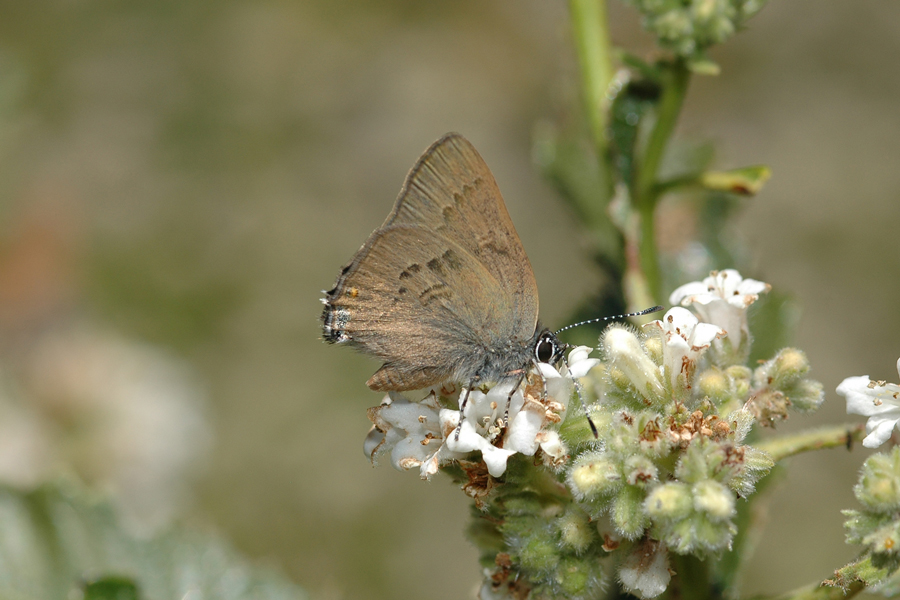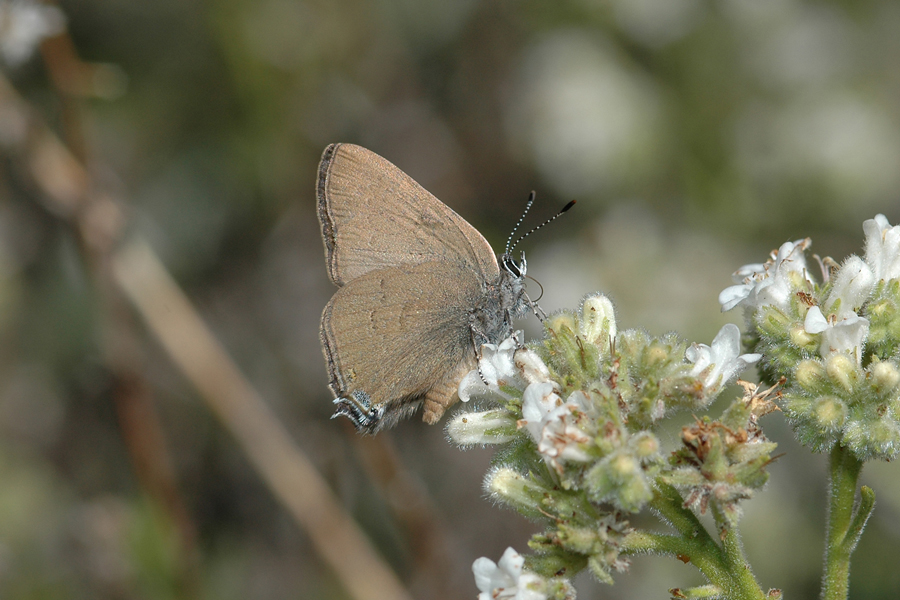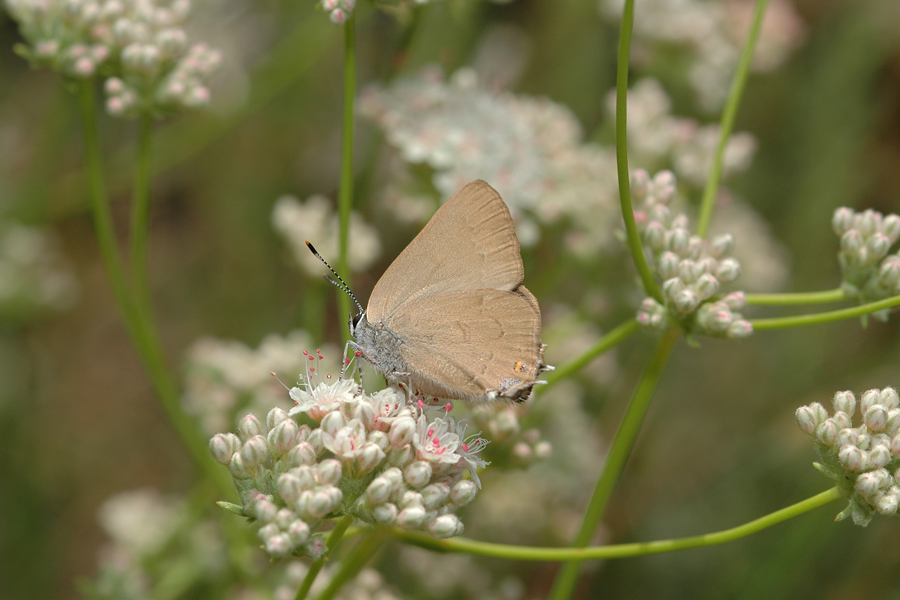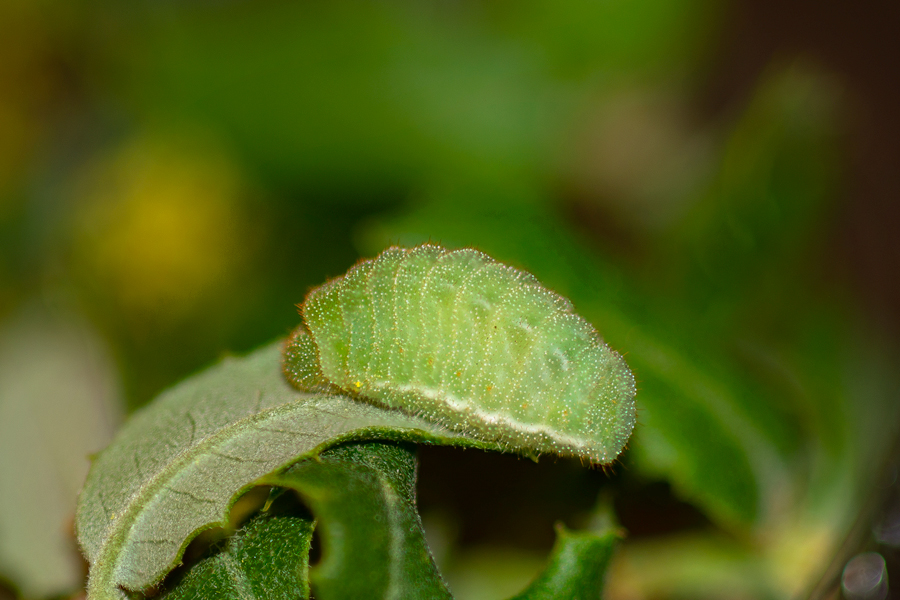Satyrium auretorum spadix
Gold-hunter's Hairstreak
This is another oak-feeding hairstreak that flies from May to mid-July. On oaks, it may be confused with the golden hairstreak, Habrodais grunus, but a good look at the hind wings near the tail sets this species apart: above the tail is a bit of orange, and below is a larger spot with black and white scales, something not found on golden hairstreaks. Satyrium saepium can look very much like auretorum, but they lack orange in the spot above the tail. Saepium use species of Ceanothus, not oaks, which also may help. And when they fly off, saepium are coppery on the dorsal side, while auretorum are a plain brown color.
Gold-hunter's hairstreaks have been associated with several species of oak: Quercus wislizeni (interior live oak), dumosa (scrub oak), douglasii (blue oak), chrysolepis (gold cup live oak), and cornelius-mulleri (desert scrub oak). The egg is the overwintering stage. First instar larvae develop in the egg and emerge around March to feed.




